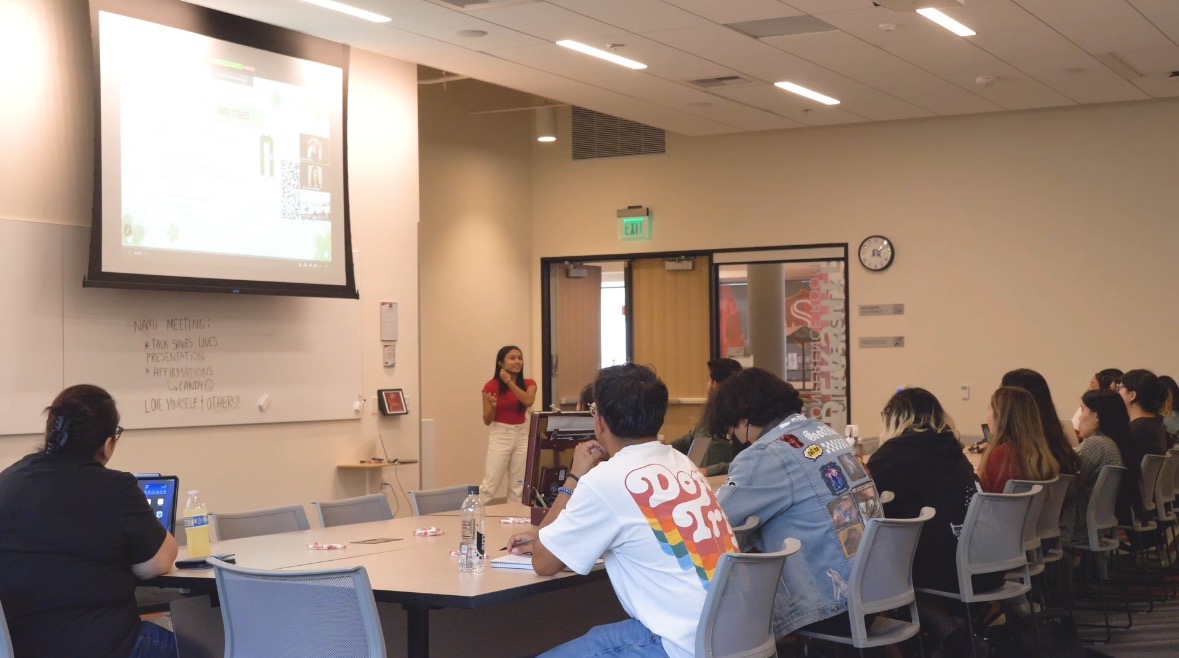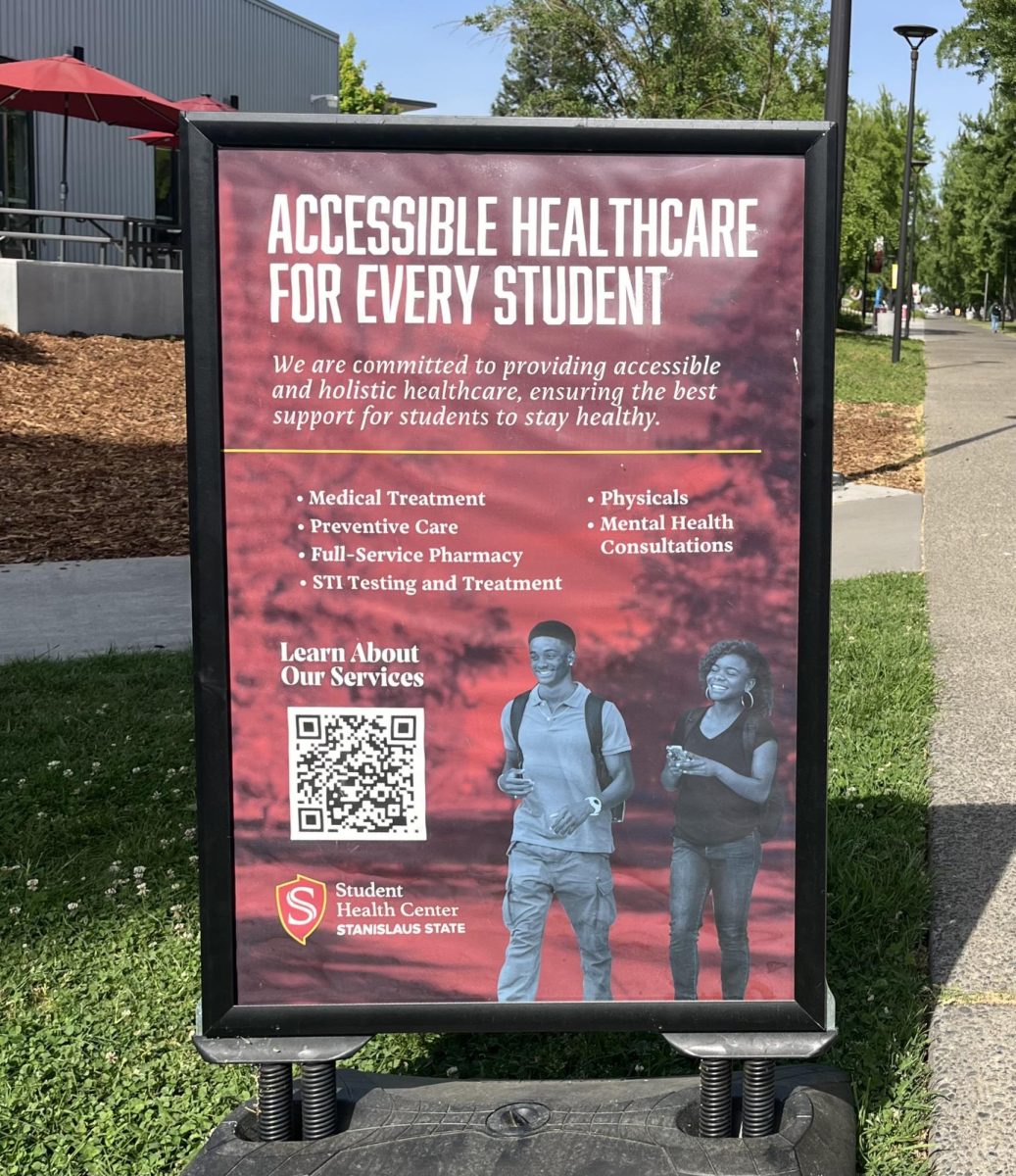Mindfulness is the practice of being fully present and aware of one’s actions and surroundings. Though this concept seems simple enough in theory, many go about day-to-day life mindlessly rather than mindfully.
Susan Brumm, Licensed Professional Clinical Counselor, who offers counseling services to students on campus and hosted a workshop about mindfulness that explained that mindfulness can help people to be more present rather than going on autopilot while completing everyday tasks.
“When it comes home to me most is when I drive in my driveway, and I have no idea how I got there,” Brumm said, “I don’t remember the train crossing, I don’t remember that weird stop sign.”
Brumm said that the goal of counselors on campus is to “remove barriers to learning” by helping students work through their problems.
She added that mindfulness can bring “little pockets of peace” amongst the stressors of everyday life. “If, by bringing some of these moments of peace in, we can bring this level of anxiety down, then when something happens we have some wiggle room,” Brumm said.
The practice of mindfulness dates back centuries to the teachings of Buddha. In modern times, researchers have had their interest piqued in how mindfulness actually effects a person’s psyche. In 1979, Dr. Jon Kabat-Zinn paved the way for mindfulness research when he implemented the practice in a scientific context that he called “mindfulness-based stress reduction” (MSBR).
MSBR has been shown time and time again to benefit those who struggle with anxiety, depression or just have a busy lifestyle. A 1998 study of medical and pre-medical students found that the practice of MSBR significantly reduced anxiety and depression and even increased empathy. Similarly, another study of college students found that mindful exercises, like Pilates or yoga, could help manage stress and improve sleep quality.
Angelica Perez-Romo, a Physician’s Assistant at Stan State’s Health Center, observed that many people go through life focused on upcoming tasks rather than being truly present in the moment. She indicated that the practice of mindfulness can help those who are anxious, depressed, or simply have a stressful lifestyle. “We recommend it,” she said.
So, since mindfulness is so beneficial to the brain, how can it actually be practiced?
At her mindfulness workshop held on March 7, Brumm walked attendees through a series of short exercises designed to increase awareness of their surroundings and decrease stress. “Even short mental and physical breaks can be really effective,” she said.
“I want you to shift your attention, and I want you to notice your body sitting in your chair,” Brumm said to the workshop attendees while they sat quietly with their eyes closed and practiced deep breaths. “Notice the back of the chair against your back, notice what your hands are touching, notice the cushion you’re sitting on…just focus on that.”
She walked attendees through simply noticing the position of their body in space. “Think about being connected solidly to the earth,” she said. Walking one’s body through the sensations of touch, smell, and sound that the brain is processing all the time can help to ground the mind and focus more on the present moment, therefore increasing mindfulness.
Other activities at the workshop included spending two minutes eating and savoring a cracker, a piece of fruit or cookie, or spending two minutes examining something from nature like a twig or seashell.
These activities were intended to help participants quiet outside thoughts and focus on their present. “This is like a muscle that you can exercise,” said Brumm. She emphasized the usability of these techniques and the ways that they can be integrated into an everyday routine.
Attendees shared stories about how examining these items in detail brought them back to their childhood, or made them think of their own children. They mused on the childlike sense of wonder that their children have, or that they had as children, that somehow gets lost in the stressors of everyday life. Mindfulness can be used as a way to rediscover that wonder.
Jaycie Wildermuth (junior, Kinesiology), applies the practice of mindfulness to her everyday life in different ways.
“It could be yoga, it could be working out, it could be journaling…the way you know your meditation is working for you is when you can bring it into your life,” she said. She shared how she has been able to bring the practice into her life by using mindfulness to get through and reap the most benefits from a difficult track practice or workout.
Some of the most popular ways to incorporate mindfulness are by practicing mindful exercise such as yoga or Tai Chi. These practices are designed to exercise both the body and the mind by connecting the two and grounding participants in the present.
However, even if you don’t have time to set aside for meditation or exercise, mindfulness can be incorporated in convenient and easy ways. A quick two minute check-in with your body and the sensations you feel as you go about everyday life can help to ground you in the present and reduce stress.
Or, there are a variety of apps, videos, and podcasts that serve the purpose of guiding you through the practice of meditation and mindfulness. Stop, Breathe, & Think is one free app that walks users through a daily physical and mental check-in, and recommends meditations and yoga videos based on check-in results. A quick YouTube search for “meditation” returns over 18 million results including calming music and guided meditations designed to help listeners relax or fall asleep.
With so many ways to incorporate mindfulness, it may take trial and error to find a practice that works with your everyday routine. “It takes a lot of time at first because it’s a commitment to yourself and you have to learn what works for you,” said Wildermuth.
Even a few minutes a day can make a vast difference. Whether it’s two hours or two minutes, the practice of mindfulness can be beneficial to anyone as a much-needed break from the stress of college life.







